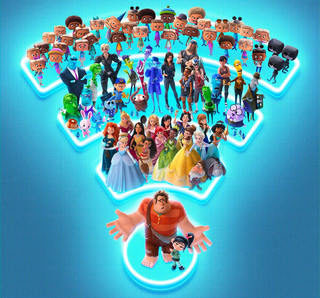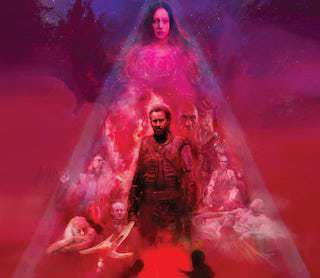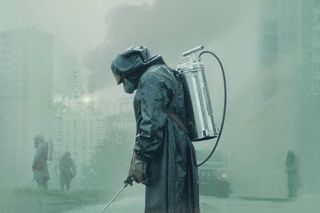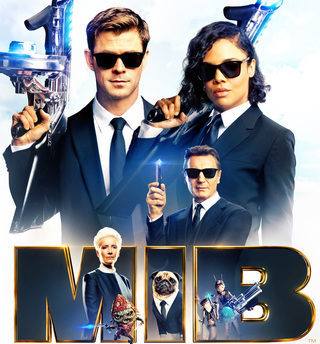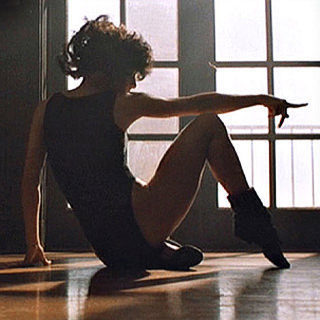History of self-censorship in Hollywood (part 2)
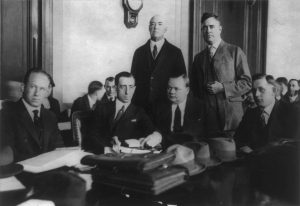 Self-censorship didn’t work. Therefore, in 1968, the MPAA rating system appeared. And the debate about it has not subsided until the threat of government censorship , together with the court decisions in the cases “Interstate Circuit V. Dallas” and “Ginsberg V. New York”, both of which considered instructions to censor inappropriate content on an urban scale, spurred Hollywood to take any action in the days of the decline of the code of self-censorship. The former MMPDA, which became the MPAA in 1945, began working on the plan.The most important decision made by the organization under the leadership of President Jack Valenti is the change of self-censorship to self-classification in the format of the rating system. The system, launched in 1968, was the progenitor of the one we are working with now. Film producers voluntarily submit their films to the MPAA for evaluation, evaluators will look at the film and choose a category for it depending on the subject matter and the content displayed. In cinemas, you can show the rating, and the viewer will decide what he wants to watch and what he does not want. It’s the rating of the content, not its quality, but it does say something about the film.In the half-century of the system’s existence, its two main goals remain unchanged: – by Reviewing and classifying films, the MPAA keeps the government from influencing the freedom of artistic vision.- By providing information to viewers, the Association helps parents to make an informed decision (the focus is always on parents and children) about what to entertain children.At least at first glance, protecting artists from the government and providing useful information seem like useful things — most people can agree with that.But the MPAA ratings are a constant source of controversy, in part because society is constantly changing the criteria by which a film should be classified in one category or another. In 2013, for example, the system began to take into account the presence of Smoking scenes. In 1968, it was impossible to think about it.Looking now “Back to the future”, released in 1985 with a rating of PG (a year after the appearance of a rating of PG-13), you can be surprised that in a film with such a label can be so much swearing plus cruelty and obscenely ambiguous scenes (for example, the one where Marty’s mother, as a teenager, tries to kiss him). And this is not uncommon for most films rated PG in the early years of the system-both because of the fact that PG-13 was not yet introduced (in the case of “Jaws” in 1975 or “Dear mother” in 1981), and because of the tastes and preferences of those who put down ratings at the time (think “Beatlejus”, “who framed Roger Rabbit” and “big”, released in 1988).Clearly, they would now get a PG-13 rating, but not just because of the content itself. And also because PG-13 rated movies make the most money.In any case, for the market, a PG rating means that the film is family-friendly or for kids who have grown out of sliders; a G rating is already firmly tied to the “kids only” label; and an R rating, inherently, prohibits viewing by a portion of the audience. But the PG-13 rating works for a wide market: such films are suitable for both teenagers and adults, they are not too serious, not too detailed, and you can safely send a teenager without an adult escort to them.That’s why studios love to release PG-13 movies. They try to reach the widest audience. They want to get huge profits from huge investments.There are other factors in which to argue with the MPAA system. Sometimes films that come out in a row are judged controversially, and for half a century the MPAA has been criticized for the way it applies its own rules.For example, take language-it is easy to track, but the approach of the organization to it is simply ridiculous. In a PG-13 rated film, there may be one (and only one) word “fuck” and only if it is used as an interjection or not to describe sexual contact. Another such word — in absolutely any context, even in a historical film about the war-and the rating jumps to R. this happened with quite modest films like” Ghost Story”,” Once upon a time ” and “Eighth grade”, but pictures like the brutal superhero “suicide Squad” or slightly raunchy Comedy “Night school” remained with a rating of PG-13.But the biggest problems — and the most pressing in the case of the “Hunt” story-are related to how differently the organization evaluates sexual content and violent content: the system treats sex tougher than blood. In a film rated PG-13, there can be no nudity, but there can be a bit of cruelty, the main thing is that there is no blood and bloody battles shown in detail (in the description of the rating, this is often called “cartoon” cruelty). Any sexual content, except for the most transparent hints, raises the rating of the film to R. And in the framework of sex, not all content is equal. Until recently, it was easier to see female genitalia than male genitalia in R-rated films and fully Nude people (they can be seen in such films, but very rarely — and especially rarely in the case of black actors).The rating system is more squeamish about descriptions of female sex: for example, scenes of female Masturbation and cunnilingus were more likely to receive higher ratings than scenes with similar male actions — and sometimes they had to be cut out in order to avoid the NC-17 rating (and this rating ensures that very few people will see the film, since many cinemas do not even buy such content).But in 2019, the greatest discontent is caused by the sloppy standards of the rating system in relation to a specific category, important in the case of ” Hunting» — cruelties.The effect of the rating system on cruelty rarely affects violence outside of films in 2018, after the mass shootings in Florida, President trump met with lawmakers and discussed reducing the number of shootings. He noted that cruelty in films can be the reason: “You see these films, they are cruel, and at the same time a child can safely watch them, the main thing is that there is no sex in it. And murders can be. And maybe they should introduce a rating system for murders.”Even if you forget about the lack of visible connection between violence on screen and in real life and the fact that “they” have a rating system for murders for half a century-trump was not entirely wrong. If easier — in American films very many violent scenes with use of firearms.And not only in films with rating R (have “of Hunting” rating declare not typically recognized, but on trailer goes, that there should be R). A study published in 2017 by the Annenberg public policy center at the University of Pennsylvania claims that in grossing PG-13-rated films-like any films of the Marvel cinematic universe — there is more violence than in the top rated R movies. Moreover, PG-13 movies are more preferred to studios than R rated movies, so the pictures often cut out the consequences of shootings, like blood and suffering, in order to provide a lower rating.The study pointed out that while previous work has not looked at how violence in movies affects the real world, “the American Academy of pediatricians noted that there is a fair amount of research indicating that violent content can affect some Teens and make them more aggressive.” For a long time, American politicians have tried to link mass shootings to violent movies, even when there has been no research to support this theory; for example, in 1999, after the shooting at Columbine school, President bill Clinton said that he had contacted the national Association of cinemas, and now teenagers will be asked for a passport when they go to the sessions of films with a rating of R. the Annenberg study from 2017 said that “apparently, the MPAA believe that cruelty performed by comic book heroes causes less harm than cruelty showing blood and various other, more realistic consequences.”At the same time the relationship between the gun industry and Hollywood was carefully documented in another 2017 study — it was conducted by the Hollywood Reporter, which took into account the supply of weapons for Hollywood films and participation in product placement. And there is a similar relationship-also carefully described — between Hollywood and the US army (from army-backed films to the Pentagon’s long-standing collaboration with content makers), according to unconfirmed reports, prompting studios to choose those scenarios in which militarism and the army are promoted. Weapons and the army cannot be connected by a straight line, but when considering the MPAA’s policy on violence, the link between them must be considered.However, the goals of the ratings system remain the same — to keep the government away from running Hollywood and to provide viewers with information on the basis of which they can decide what to spend the entertainment portion of the salary. And it is these goals that the actions of Universal, which postponed the “Hunt”, can jeopardize.
Self-censorship didn’t work. Therefore, in 1968, the MPAA rating system appeared. And the debate about it has not subsided until the threat of government censorship , together with the court decisions in the cases “Interstate Circuit V. Dallas” and “Ginsberg V. New York”, both of which considered instructions to censor inappropriate content on an urban scale, spurred Hollywood to take any action in the days of the decline of the code of self-censorship. The former MMPDA, which became the MPAA in 1945, began working on the plan.The most important decision made by the organization under the leadership of President Jack Valenti is the change of self-censorship to self-classification in the format of the rating system. The system, launched in 1968, was the progenitor of the one we are working with now. Film producers voluntarily submit their films to the MPAA for evaluation, evaluators will look at the film and choose a category for it depending on the subject matter and the content displayed. In cinemas, you can show the rating, and the viewer will decide what he wants to watch and what he does not want. It’s the rating of the content, not its quality, but it does say something about the film.In the half-century of the system’s existence, its two main goals remain unchanged: – by Reviewing and classifying films, the MPAA keeps the government from influencing the freedom of artistic vision.- By providing information to viewers, the Association helps parents to make an informed decision (the focus is always on parents and children) about what to entertain children.At least at first glance, protecting artists from the government and providing useful information seem like useful things — most people can agree with that.But the MPAA ratings are a constant source of controversy, in part because society is constantly changing the criteria by which a film should be classified in one category or another. In 2013, for example, the system began to take into account the presence of Smoking scenes. In 1968, it was impossible to think about it.Looking now “Back to the future”, released in 1985 with a rating of PG (a year after the appearance of a rating of PG-13), you can be surprised that in a film with such a label can be so much swearing plus cruelty and obscenely ambiguous scenes (for example, the one where Marty’s mother, as a teenager, tries to kiss him). And this is not uncommon for most films rated PG in the early years of the system-both because of the fact that PG-13 was not yet introduced (in the case of “Jaws” in 1975 or “Dear mother” in 1981), and because of the tastes and preferences of those who put down ratings at the time (think “Beatlejus”, “who framed Roger Rabbit” and “big”, released in 1988).Clearly, they would now get a PG-13 rating, but not just because of the content itself. And also because PG-13 rated movies make the most money.In any case, for the market, a PG rating means that the film is family-friendly or for kids who have grown out of sliders; a G rating is already firmly tied to the “kids only” label; and an R rating, inherently, prohibits viewing by a portion of the audience. But the PG-13 rating works for a wide market: such films are suitable for both teenagers and adults, they are not too serious, not too detailed, and you can safely send a teenager without an adult escort to them.That’s why studios love to release PG-13 movies. They try to reach the widest audience. They want to get huge profits from huge investments.There are other factors in which to argue with the MPAA system. Sometimes films that come out in a row are judged controversially, and for half a century the MPAA has been criticized for the way it applies its own rules.For example, take language-it is easy to track, but the approach of the organization to it is simply ridiculous. In a PG-13 rated film, there may be one (and only one) word “fuck” and only if it is used as an interjection or not to describe sexual contact. Another such word — in absolutely any context, even in a historical film about the war-and the rating jumps to R. this happened with quite modest films like” Ghost Story”,” Once upon a time ” and “Eighth grade”, but pictures like the brutal superhero “suicide Squad” or slightly raunchy Comedy “Night school” remained with a rating of PG-13.But the biggest problems — and the most pressing in the case of the “Hunt” story-are related to how differently the organization evaluates sexual content and violent content: the system treats sex tougher than blood. In a film rated PG-13, there can be no nudity, but there can be a bit of cruelty, the main thing is that there is no blood and bloody battles shown in detail (in the description of the rating, this is often called “cartoon” cruelty). Any sexual content, except for the most transparent hints, raises the rating of the film to R. And in the framework of sex, not all content is equal. Until recently, it was easier to see female genitalia than male genitalia in R-rated films and fully Nude people (they can be seen in such films, but very rarely — and especially rarely in the case of black actors).The rating system is more squeamish about descriptions of female sex: for example, scenes of female Masturbation and cunnilingus were more likely to receive higher ratings than scenes with similar male actions — and sometimes they had to be cut out in order to avoid the NC-17 rating (and this rating ensures that very few people will see the film, since many cinemas do not even buy such content).But in 2019, the greatest discontent is caused by the sloppy standards of the rating system in relation to a specific category, important in the case of ” Hunting» — cruelties.The effect of the rating system on cruelty rarely affects violence outside of films in 2018, after the mass shootings in Florida, President trump met with lawmakers and discussed reducing the number of shootings. He noted that cruelty in films can be the reason: “You see these films, they are cruel, and at the same time a child can safely watch them, the main thing is that there is no sex in it. And murders can be. And maybe they should introduce a rating system for murders.”Even if you forget about the lack of visible connection between violence on screen and in real life and the fact that “they” have a rating system for murders for half a century-trump was not entirely wrong. If easier — in American films very many violent scenes with use of firearms.And not only in films with rating R (have “of Hunting” rating declare not typically recognized, but on trailer goes, that there should be R). A study published in 2017 by the Annenberg public policy center at the University of Pennsylvania claims that in grossing PG-13-rated films-like any films of the Marvel cinematic universe — there is more violence than in the top rated R movies. Moreover, PG-13 movies are more preferred to studios than R rated movies, so the pictures often cut out the consequences of shootings, like blood and suffering, in order to provide a lower rating.The study pointed out that while previous work has not looked at how violence in movies affects the real world, “the American Academy of pediatricians noted that there is a fair amount of research indicating that violent content can affect some Teens and make them more aggressive.” For a long time, American politicians have tried to link mass shootings to violent movies, even when there has been no research to support this theory; for example, in 1999, after the shooting at Columbine school, President bill Clinton said that he had contacted the national Association of cinemas, and now teenagers will be asked for a passport when they go to the sessions of films with a rating of R. the Annenberg study from 2017 said that “apparently, the MPAA believe that cruelty performed by comic book heroes causes less harm than cruelty showing blood and various other, more realistic consequences.”At the same time the relationship between the gun industry and Hollywood was carefully documented in another 2017 study — it was conducted by the Hollywood Reporter, which took into account the supply of weapons for Hollywood films and participation in product placement. And there is a similar relationship-also carefully described — between Hollywood and the US army (from army-backed films to the Pentagon’s long-standing collaboration with content makers), according to unconfirmed reports, prompting studios to choose those scenarios in which militarism and the army are promoted. Weapons and the army cannot be connected by a straight line, but when considering the MPAA’s policy on violence, the link between them must be considered.However, the goals of the ratings system remain the same — to keep the government away from running Hollywood and to provide viewers with information on the basis of which they can decide what to spend the entertainment portion of the salary. And it is these goals that the actions of Universal, which postponed the “Hunt”, can jeopardize.
Universal’s decision to postpone the “Hunt” may open up new unpleasant prospects in the field of self-censorykak many have already noted, although we do not know what is actually happening in the “Hunt”, the probability that in the film the beautiful rich liberals successfully hunt rednecks and trump fans, rejoice at the outcome and go in their “Prius” in search of lattes, is extremely small. In trailers usually try to hide the details so that the viewer could at least be surprised at something when watching a full-fledged film, and the script of this picture was written by one of the most famous fans of twisted plots, Damon Lindelof (series “Stay alive” and “Abandoned”), with one of his faithful co-authors. Those who thought about it even for half a second, realized that shown in the trailer — not all that will be in the film.But the point is not exactly. The point is hatred. And last year’s similar “Man on the moon” story shows that valid claims about “liberal Hollywood” are not what Fox and its friends, including President trump, want.And it doesn’t matter whether you want movies like “the Hunt” to exist in principle or not (I think this is the question on which reasonable people can have disagreements): a little thought, you can understand that Universal should not have postponed the release in this way.Despite all the shortcomings of the MPAA rating system (and there are many), it provides freedom for both artists and viewers. Filmmakers can create what they want. No one forces it to watch, and the government does not forbid (Yes, many theaters have rules under which certain categories of viewers can buy tickets for PG-13 and R movies, but these rules are laid down as part of an agreement between the theater chains and the MPAA — not at the national or Federal level). Everyone can decide for themselves. The system, despite numerous shortcomings, still works.
And if viewers hate the film, oppose what it shows, or believe that it is indecent to release it, they simply can not go to it — “vote” in the form that Hollywood understands best: the money earned by sweat and blood.
Of course, President trump can Express his thoughts about “Hunting, “”Blood sport” and other movies he loves or hates, and it doesn’t matter whether he agrees with what he sees on television or not. But the fact that Universal canceled the release of “the Hunt” the day after it tweeted about the film — even if the coincidence is coincidental, the Studio revealed that the head of state can actually influence which films can be released and which can’t.Now there is little doubt that if the script had developed a little differently, if a more left-wing President had publicly commented on the film, and as a result the film would have been removed because, for example, Rachel Maddow spoke badly about it — Fox would have been furious. But even without partnerships, Universal’s actions set a precedent for the entire industry in which whining politicians can influence releases — and it goes against Hollywood’s nearly century-old intentions to keep government at Bay. And plus to everything shows that Hollywood does not trust the choice of the audience.Of course, all this may be pointless speculation about the future. Streaming services that are not constrained by the rules created for cinemas can produce anything, without any ratings, for a niche and special audience. I sense that the coming split of our mainstream media according to political preferences. But Hollywood, if it still wants to keep the government out of its business, should not give in to pressure. Studios should, as they say, not give up their positions.
